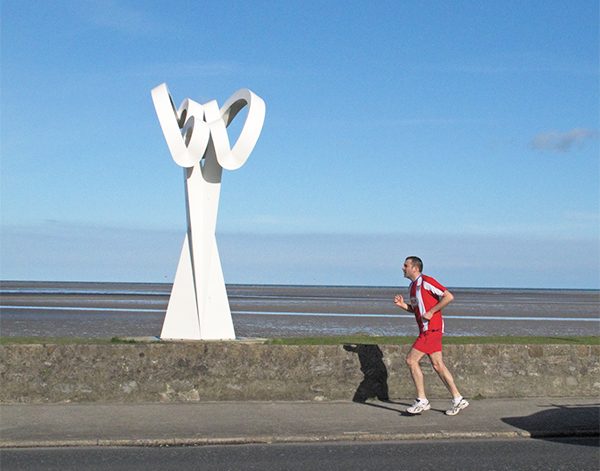
Pictured: Blue skies over Sandymount.
Residents of Sandymount are concerned that the installation of soakaway flood drainage measures in the area by Dublin City Council (DCC) will prove ineffective and could contribute to further flooding incidents as they may not be suitable for a coastal area that is prone to tidal rises in the water table.
Flooding here remains a concern with both sea water/tidal floods and the river Dodder flooding in recent years.
Flash floods have been observed to occur in areas of urbanisation and development on land that had previously provided its own natural drainage for surface flood water, such as Sandymount. One method of dealing with surface water flooding is to install soakaways, which are pits filled with hardcore that collect excess surface water and allow it to drain away into surrounding soil gradually, so as to take the burden off sewerage systems. This method of providing drainage is consistent with sustainable drainage systems (SUDS), an increasingly popular means of addressing surface water flooding problems that have become a favoured approach in the UK.
SUDS involve creating drainage and soakage systems that are low-maintenance and which have low impact on the environment. They generally incorporate drainage basins and/or gravel-filled trenches which filter and disperse excess surface water. The use of SUDS is now compulsory in new public and private developments in the Dublin region.
However, Sandymount resident David Reddy, a worker in the construction industry who has lived on Durham Road for 63 years, says that installing SUDS soakaways will prove ineffective in draining flood water in the locality due to tidal rises in the water table. He became concerned when planning was sought to include SUD-style soakaway drainage in a dwelling on Lea Road adjacent to his home.
“Lea Road, in common with a lot of DCC’s area, was once mudflats and a strand where seas ran freely, as well as the Liffey, Dodder, Tolka and smaller rivers and streams,” he explained. “In these areas the tide still flows in and out twice a day to within 500 to 1,000mm below ground level. Every so often we have a combination of rainfall, storms and a full/new moon, and flooding big time. Some is the result of the overflow on the coast but a lot comes from the tide seeping up through drains and the ground itself.
If there’s a soakaway pit in such an affected area it will facilitate tidal water to spill out and flood.”
Reddy became aware of the use of soakaways in the area due to the planning proposal for the neighbouring Lea Road residence which included soakaway drainage. DCC planning allowed for the soakaway, even after An Bord Pleanála had refused it.
Reddy was one of a number of residents who raised concerns about anti-flooding measures at a public pre-planning stage meeting hosted by DCC Regional Projects and Flood Advisory Office in the Sandymount Hotel on July 21st.
At that meeting, DCC presented the most recent Coastal Flood Defence Scheme plans to local members of the public and other interested parties. Reddy, among other locals attending, expressed concerns that there was a lack of joined-up planning between the coastal defence improvements and inland surface water drainage, and that the tidal effect on the water table was not being taken into consideration in planning for soakaways in the area.
A number of residents now feel that their concerns surrounding this issue are being ignored by DCC, and Reddy, having exhausted all routes of opposing the installation of the soakaway next to his home, feels there is no mechanism in the DCC planning process to correct what he sees as a major planning error.
Responding to NewsFour regarding the concerns of local residents around the issue a spokesperson for DCC said: “Before a soakaway can be constructed the proposed location has to be tested in relation to the water table and ground permeability and passed as adequate; as per BRE 365.”
The term, BRE 365, refers to the formalised standards of tests and calculations required before the installation of a soakaway which will determine its size and design.
There is no mention of tidal variations in the water table in the BRE 365 guidelines but they conclude that “site investigations must be undertaken thoroughly and competently so that all aspects of soil properties, geotechnology and hydrogeology are adequately reviewed alongside the hydraulic designs of soakaway.”
DCC did not respond when questioned as to whether their application of BRE 365 tests and standards take into consideration the tidal rises in the water table that have been observed by residents of Sandymount. This is unlikely to address the concerns of Reddy and other locals who have seen water flooding up through local drains at times of high tides and heavy rainfall.
By Harry Bradley



